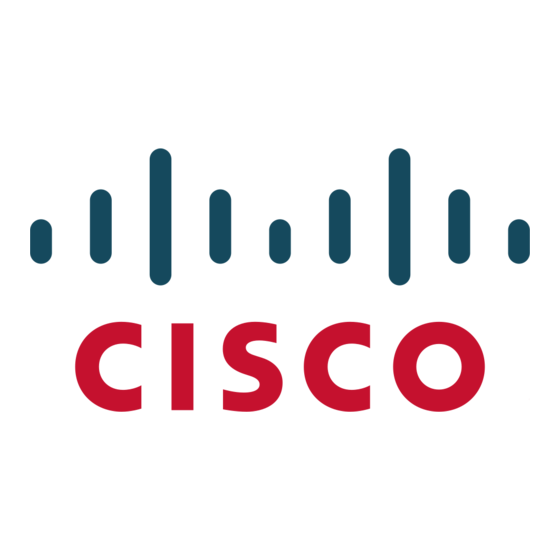Cisco 3550 48 - Catalyst SMI Switch Veri Sayfası - Sayfa 4
Anahtar Cisco 3550 48 - Catalyst SMI Switch için çevrimiçi göz atın veya pdf Veri Sayfası indirin. Cisco 3550 48 - Catalyst SMI Switch 21 sayfaları. Cisco catalyst 3550-48: supplementary guide
Ayrıca Cisco 3550 48 - Catalyst SMI Switch için: Ürün Bülteni (3 sayfalar), Ürün Bülteni (5 sayfalar), Sorular ve Cevaplar (9 sayfalar)

provider 802.1Q tag is removed when the packets exit their network, leaving the original packets untouched. Other
Layer 2 protocols such as STP, VLAN Trunk Protocol (VTP), and Cisco Discovery Protocol will also be tunneled
through the service provider's network. The 802.1Q tunneling feature enables service providers to use a single VLAN
(up to 4096 VLAN IDs) to support customers who have multiple VLANs. In addition, the feature preserves
customers' original VLAN IDs and segregates traffic from different customers within the service provider
infrastructure even when those customers use the same VLAN IDs. As a result, enterprise customers subscribing to
TLS can transparently send and receive traffic from other metro sites through the service provider network as though
the sites were within the same corporate LAN.
In addition to Layer 2 VPN services, Multi-VRF CE (Virtual Routing Forwarding Customer Edge, also called
VRF-lite) and Border Gateway Protocol (BGP) on the Cisco Catalyst 3550 will enable the creation of a Layer 3 VPN
service by keeping separate routing tables for each VPN customer. Multi-VRF CE is a feature that allows a service
provider to support two or more VPNs on a single 3550 switch, where IP addresses can be overlapped among the
VPNs. Multi-VRF CE uses input interfaces to distinguish routes for different VPNs and forms virtual
packet-forwarding tables by associating one or more Layer 3 interfaces with each VRF. Interfaces in a VRF can be
either physical, such as Ethernet ports, or logical, such as VLAN SVIs, but an interface cannot belong to more than
one VRF at any time.
The Cisco Catalyst 3550 offers superior Layer 3 granular QoS features to enable service providers to provide high-
quality services with service-level agreements (SLAs). The QoS features ensure that network traffic is classified,
prioritized, and congestion is avoided in the most efficient manner possible. The Cisco Catalyst 3550 can classify,
reclassify, police, and mark the incoming packets before the packet is placed in the shared buffer. Packet classification
allows the network elements to discriminate between various traffic flows and enforce policies based on Layer 2 and
Layer 3 QoS fields.
To implement QoS, first, the Cisco Catalyst 3550 switches identify traffic flows, or packet groups, and classify or
reclassify these groups using either the Differentiated Services Code Point (DSCP) field or the 802.1p class-of-service
(CoS) field, or both. Classification and reclassification can be based on criteria as specific as the source/destination
IP address, source/destination Media Access Control (MAC) address, or the Layer 4 Transmission Control Protocol/
User Datagram Protocol (TCP/UDP) port. At the ingress, the Cisco Catalyst 3550 can also perform policing and
marking of the packet. To ensure proper policing and marking on a per packet basis, control plane and data plane
access control lists (ACLs) are supported on all ports.
After the packet goes through classification, policing, and marking, it is assigned to the appropriate queue before
exiting the switch. The Cisco Catalyst 3550 Series supports four egress queues per port, which allows the service
provider to be more discriminating and specific in assigning priorities for the various applications. At egress, the
switch performs scheduling and congestion control. Scheduling is an algorithm that determines the order in which
the queues are processed. The switches support Weighted Round Robin (WRR) scheduling and strict priority
queuing. The WRR queuing algorithm ensures that the lower-priority packets are not entirely starved for bandwidth
and are serviced without compromising the priority settings administered by the service provider. Strict priority
queuing ensures that the highest-priority packets will always get serviced first, ahead of all other traffic, which allows
the other three queues to be serviced using WRR scheduling. In conjunction with scheduling, the Cisco Catalyst 3550
Series Gigabit Ethernet ports support congestion control via Weighted Random Early Detection (WRED). WRED
avoids congestion by setting thresholds at which packets are dropped before congestion occurs.
Cisco Systems, Inc.
All contents are Copyright © 1992–2002 Cisco Systems, Inc. All rights reserved. Important Notices and Privacy Statement.
Page 4 of 20
